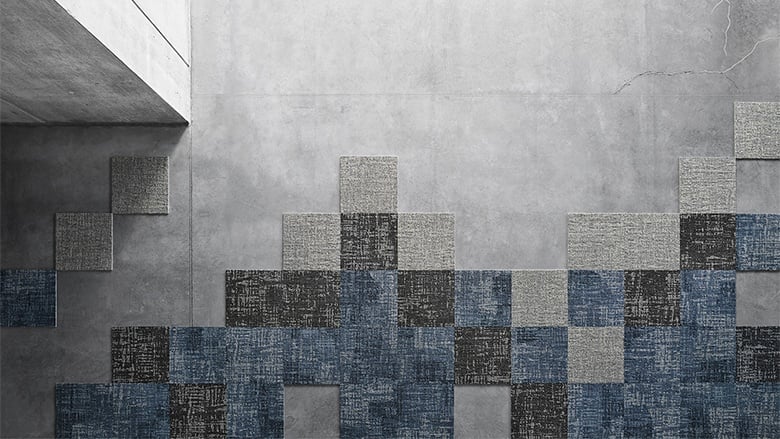
This is the fourth chapter of The Ultimate Guide to Carpets.
Download the full guide here.
Carpet tiles, also known as modular carpets or square carpets, are squares cut from wall-to-wall rolls which can be fitted together to make up a carpet. Carpet tiles are generally available in following sizes: 48x48, 50x50, 60x60 and 96x96 cm.
Some carpet tile providers also offer other shapes and sizes like hexagons and triangles with which the installation, however, does increase in complexity and cost. Carpet tiles are justly popular as a flooring option for commercial environments, such as bars and restaurants, and other relatively uncomplicated projects.
Carpet tiles can be used as an alternative to wall-to-wall carpet in almost any situation not requiring unique customisation and offer easy installation and maintenance, longevity and the same qualities as wall to wall for creating a healthy, comfortable indoor environment. Here are four important factors to keep in mind when considering carpet tiles for your next project.
With their small size, carpet tiles are considerably easier to lift, move and install when compared to wall to wall carpets. That's one of the main benefits of carpet tiles vs. other types of carpets.
Carpet tiles also typically result in considerably less waste during installation as much less cutting is needed, particularly in rooms with many nooks and odd angles. Some manufacturers also offer very lightweight carpet tiles that make life even easier for carpet installers.
It's for these reasons that carpet tiles offer considerable cost and time savings over wall-to-wall carpet – making carpet tiles an ideal choice for projects on a tight budget or tight timeline.
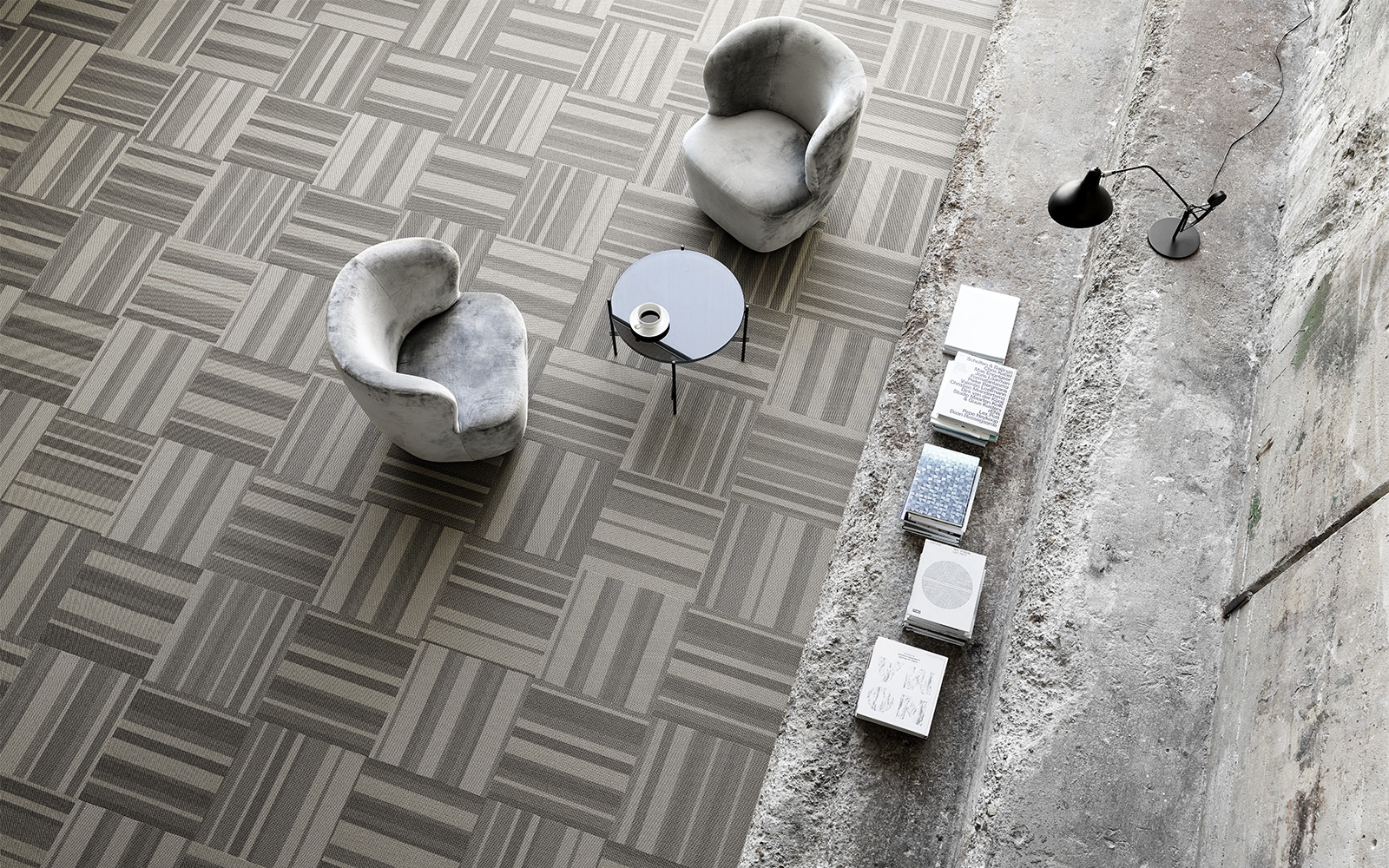
Carpet tiles aren't only easy to install, but also easy to remove. Should wear and damage occur, the carpet tiles can readily be replaced individually rather than replacing an entire floor.
Fitted carpets can be spot-repaired as well, but the process is often significantly more complicated than it's the case with carpet tiles, both in terms of ordering a matching segment of carpet and in terms of fitting expertise required.
Another maintenance advantage of carpet tiles is that the squares can be easily lifted if access is needed to the substrate floor beneath. This means technicians are able to gain access to underfloor cables when needed, a considerable advantage in spaces that are constantly subject to change, such as conference halls and agile workplaces.
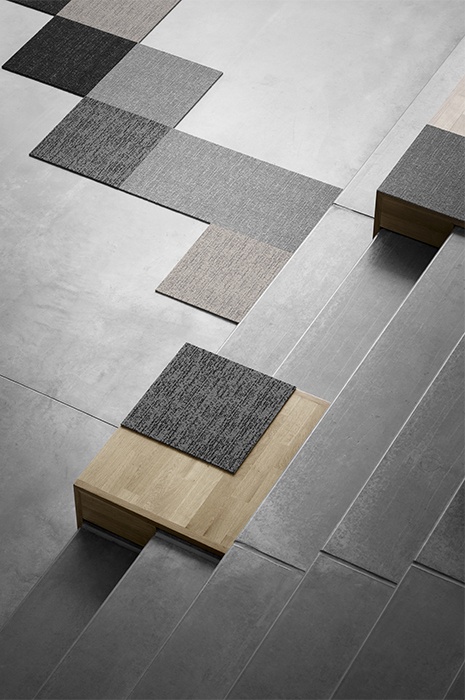
In some ways, carpet tiles offer greater design flexibility than wall-to-wall carpets. With new dye technologies, it's possible to create a wide range of colours and patterns on carpet tiles that aren't possible on wall-to-wall carpets. By applying dye after the carpet is cut into modular carpet squares, it's possible to achieve perfect design registration across all edges of each tile, so a design flows almost seamlessly from tile to tile.
Like wall-to-wall, carpet squares can be custom coloured or applied with a custom design to create unique environments only limited by the designer's imagination. For unique or complicated custom designs, wall-to-wall is still likely to be your best option, but with the emerging technologies, carpet tiles no longer necessarily mean a boxy look or a clean solid colour.
For unique or complicated custom designs, wall-to-wall is still likely to be your best option, but with the emerging technologies, carpet tiles no longer necessarily mean a boxy look or a clean solid colour.
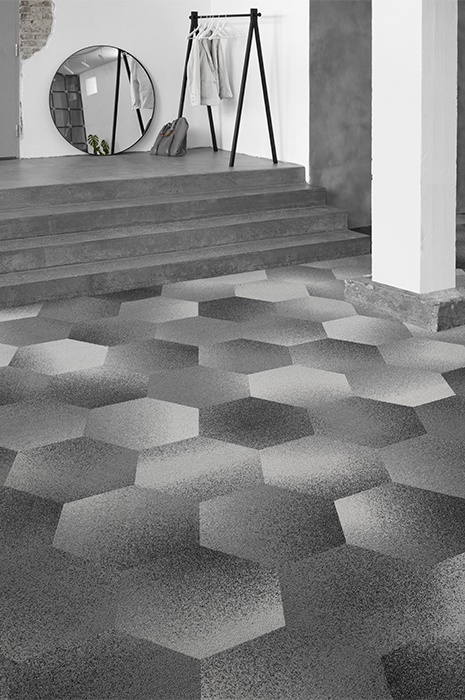
Carpet tiles today offer all the warmth, comfort, acoustic qualities and health and safety benefits of wall-to-wall carpets with the added advantage that their layered structure absorbs even more structure-borne sound than wall-to-wall, providing a noticeable improvement in sound levels even in large open plan office environments, call centres, crowded bars or busy restaurants.
Carpet tiles do, however, lack the option of extra plush backing, which may not impact acoustics, but will impact the tactile underfoot sensation that might be desired in certain high end projects.
All in all, carpet tiles can be used successfully to striking effect in almost all commercial and institutional environments. While wall-to-wall carpet remains the superior choice for large-scale patterning and to create a luxurious ambience, carpet tiles are a cost-effective choice in almost all other cases and create a freedom of design potential far above any other non-carpet flooring options.
We hope this blogpost helped you understand what a carpet tile is and how you can use carpet tiles in design project where time and budget is critical.
Continuing on, in the this blogpost we look at how to go about choosing the right carpet for your project.
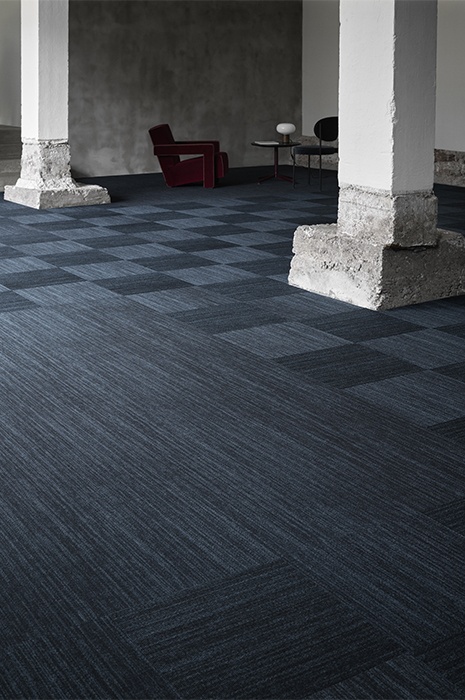
Design inspiration delivered straight to you